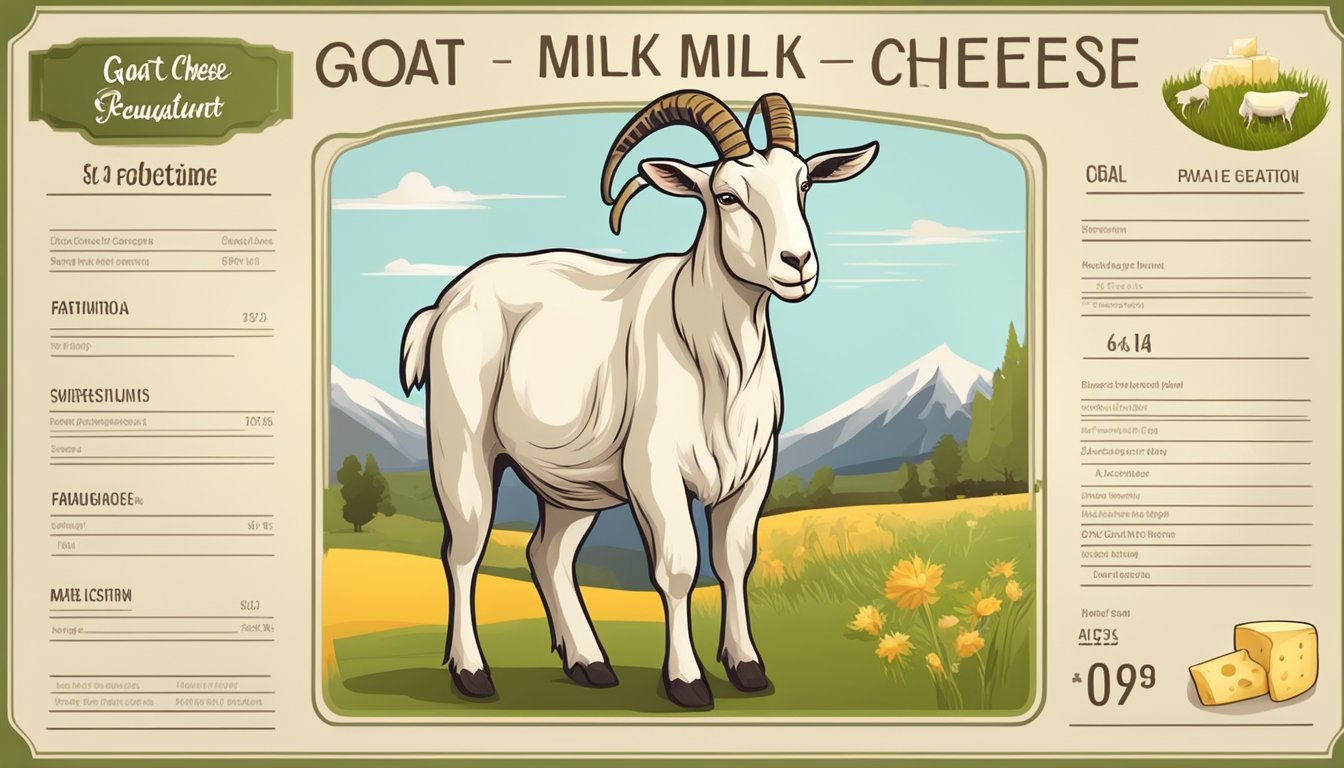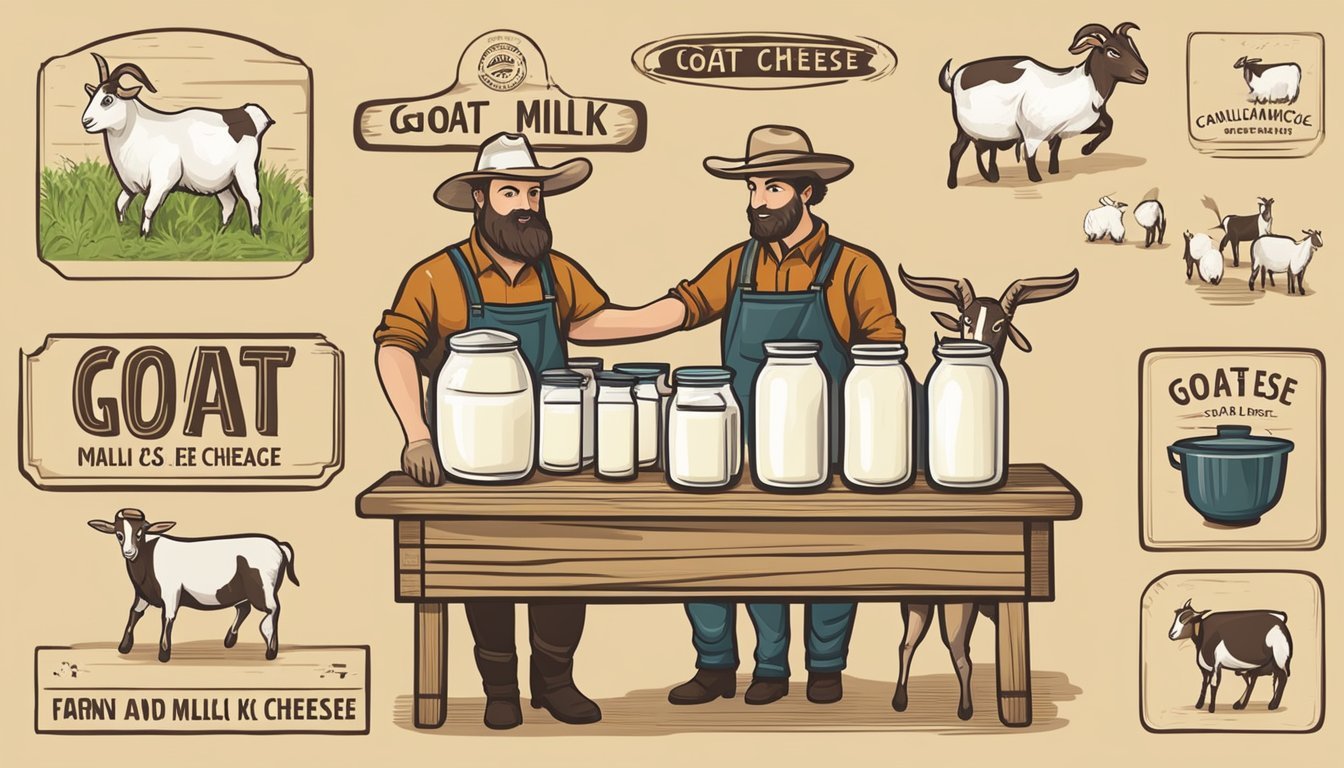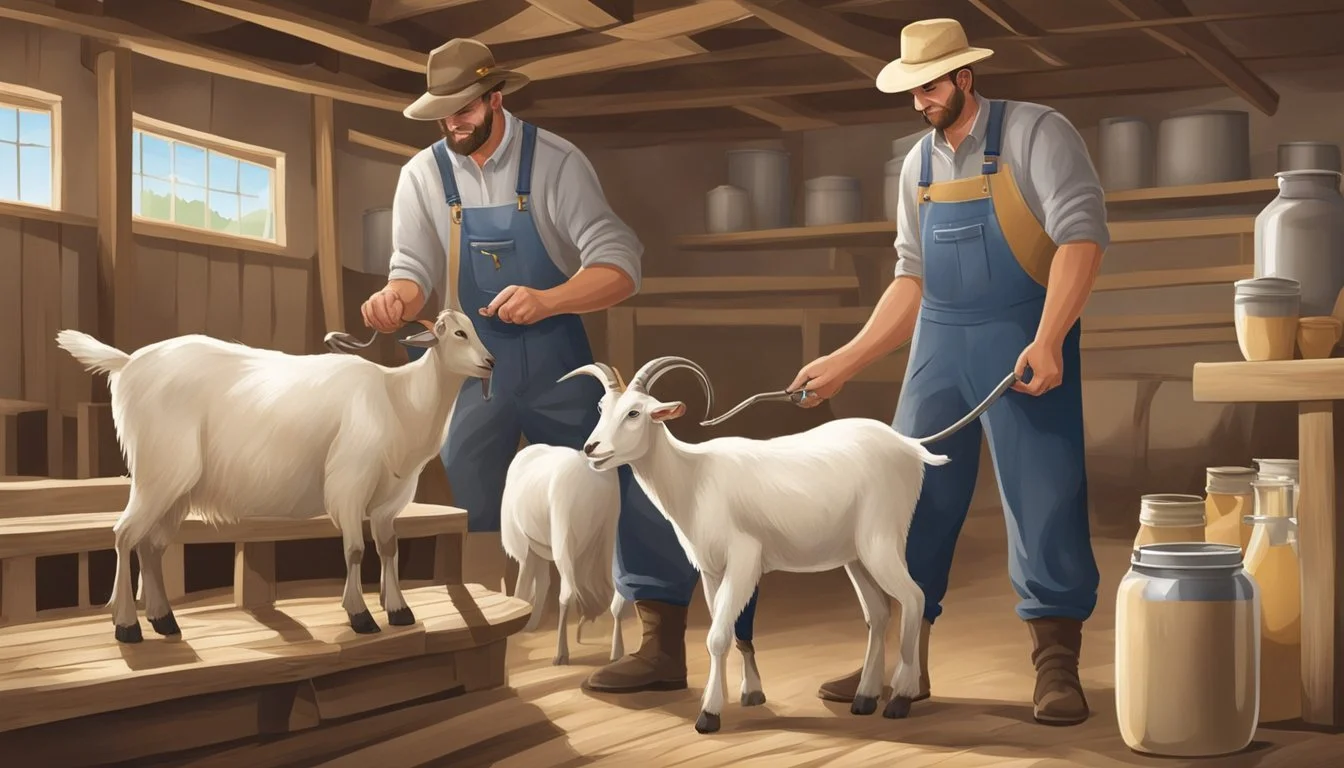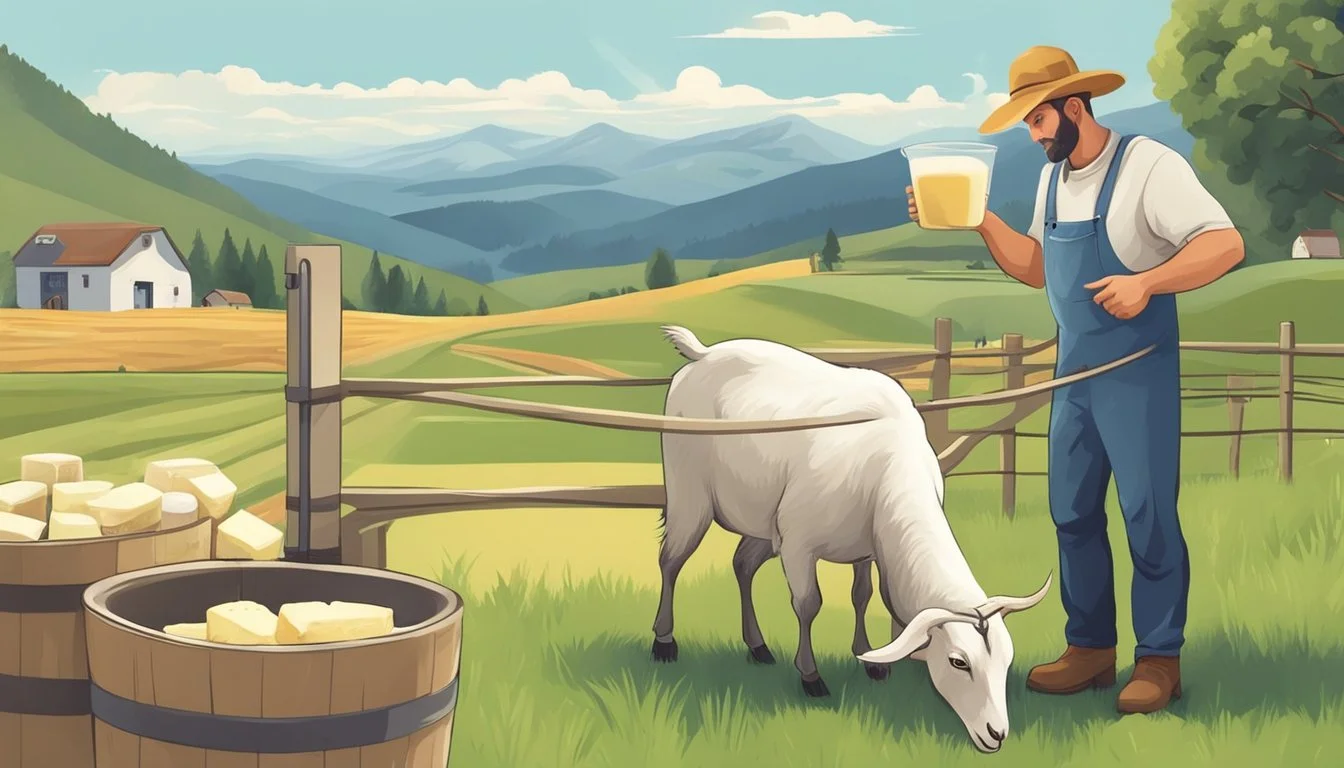What are the Regulations for Selling Goat Milk and Cheese?
Understanding Dairy Compliance and Sales Laws
Navigating the regulations surrounding the sale of goat milk and cheese (What wine goes well with cheese?) is a key step for producers looking to enter the market. Regulations vary significantly from state to state, with some allowing the sale of raw milk and others imposing stringent requirements. While the demand for goat milk products is on the rise, producers must comply with legal standards to ensure food safety and consumer protection. This includes understanding the specific licenses required to sell dairy products, which can depend on factors such as herd size, milking facility standards, and processing practices.
In the United States, selling anything other than Grade A pasteurized milk is illegal in the majority of states; however, there are exceptions that enable farmers to sell raw milk within certain parameters. Producers interested in offering goat cheese for sale must be cognizant of both federal and state regulations, which often require that dairy products be processed in appropriately licensed facilities. Compliance with these laws ensures that all products meet health standards and are safe for public consumption.
For those considering the sale of goat milk or its byproducts like cheese, it's essential to conduct thorough research into the legalities that govern dairy product sales within their jurisdiction. Establishments like Western Culture Farmstead Creamery illustrate how a separate space for cheese production can meet legal requirements. Meanwhile, the legal landscape is continually evolving as consumer preferences change and advocacy for direct farm sales grows, underscoring the necessity for producers to stay informed about current and pending legislation.
Understanding Goat Milk and Cheese Regulations
The intricate regulations governing the sale of goat milk and cheese are crafted to safeguard both consumer health and the integrity of dairy products. These rules are enforceable under state and federal guidelines, and require adherence to specific quality standards.
Legal Framework and Government Bodies
The production and sale of goat milk and cheese in the United States fall under the oversight of both state Department of Agriculture entities and the federal Food and Drug Administration (FDA). These organizations are responsible for supervising dairy operations to ensure compliance with the Pasteurized Milk Ordinance (PMO) and other safety standards. The PMO primarily addresses Grade A standards which are a prerequisite for interstate commerce.
Grade A versus Grade B Standards
Grade A: Dairy operations that aim to engage in the nationwide distribution of goat milk or transform it into dairy products must attain a Grade A license. This certification necessitates compliance with stringent criteria, including regular inspection, adherence to quality control measures, and facility design standards.
Grade B: Dairy operations that do not need to sell across state lines or to large commercial distributors often opt for Grade B certification. This is generally simpler to acquire and sufficient for many local or artisanal cheese processors. However, products under Grade B cannot be sold for fluid milk consumption and are typically designated for cheese production.
Pasture and Herd Management for Compliance
Conforming to regulatory standards entails meticulous herd management and pasture maintenance. Livestock health programs and milking processes are under constant scrutiny to prevent contamination. Regular testing of milk samples is a critical component to uphold quality, and successful dairy operations maintain a close relationship with their local Department of Agriculture for ongoing guidance and oversight. Herd management practices and pasture conditions directly influence the quality of the milk produced and, consequently, a dairy's ability to meet legal requirements for their license grade.
In summary, the path to legally selling goat milk and cheese is paved with a series of well-defined policies and standards. These regulations are in place to protect consumers and the reputation of the dairy industry, ensuring that all available products are safe, wholesome, and reliably sourced.
Production and Processing Guidelines
In the dairy industry, regulatory compliance for goat milk and cheese production is critical, involving specific equipment standards, pasteurization requirements, and cheese plant operations to ensure quality and safety.
Equipment and Facility Requirements
To start a goat dairy production system, one must ensure all equipment and facilities meet the stringent guidelines set by state and federal regulators. Facilities must be designed to prevent contamination and facilitate efficient cleaning. This means surfaces that come in contact with milk, such as milking machines and storage containers, should be made of non-toxic, corrosion-resistant materials like stainless steel. Proper refrigeration equipment is also vital to maintain milk at the required temperatures.
Pasteurization Processes
Pasteurization serves as a key step to ensure the safety of goat milk and cheese products. During this process, milk is heated to a specific temperature for a set period to destroy harmful microorganisms. Two main methods are typically used: High-Temperature Short-Time (HTST) pasteurization, which heats milk to at least 161°F for 15 seconds, and Low-Temperature Long-Time (LTLT) pasteurization, which involves heating milk to 145°F for 30 minutes. For cheesemaking, certain standards allow for the use of raw milk if the cheese is aged for a minimum of 60 days at specific temperatures.
Cheese Plant Operation Standards
Cheese plant standards are rigorous to ensure cheesemaking is done in a way that produces safe and high-quality products. They implement Good Manufacturing Practices (GMPs) and Hazard Analysis Critical Control Points (HACCP) protocols to monitor critical phases of production. They require regular testing for standard plate count, somatic cell count, and bacterial limits to maintain milk quality. The cheese plant must have a system for traceability and recall in the event of product contamination or other safety concerns.
Certification and Licensing
Before venturing into the sale of goat milk and cheese, producers must consider the multi-layered landscape of certification and licensing. Acquiring the correct license is crucial not only for legal operation but for ensuring public safety and consumer confidence.
Obtaining Grade A Licensing
For a goat dairy operation that aims to enter the mainstream commercial market, obtaining a Grade A license is imperative. This licensing ensures that a producer complies with high safety standards for milk that is intended for fluid consumption or for use in the production of fresh dairy products. The process involves regular inspections, adhering to proper sanitation protocols, and ensuring that milk cooling and storage equipment meet specific standards.
Navigating Grade B Commercial Dairying
Grade B licenses are more accessible for smaller-scale and startup goat dairies. This certification stipulates less stringent requirements than Grade A, and the milk is typically utilized for the production of cheeses, especially within the artisanal sector. Producers must still adhere to safety and quality regulations, but these are tailored to the unique processing needs and scale of smaller operations.
Raw Milk Distribution Licensing
The raw milk market requires its own specific set of licenses due to the different handling and safety concerns associated with non-pasteurized products. While selling anything other than pasteurized milk is illegal in many states, some have statutes in place that allow the sale of raw milk under certain conditions. Producers must navigate a complex interplay of state laws and obtain the appropriate license to legally distribute raw goat milk.
Marketing and Sales
Selling goat milk and cheese involves navigating a patchwork of regulations and understanding marketplace dynamics. It is crucial for producers to create compelling branding, identify viable sales channels, and gauge the consumer demand for their products.
Branding and Product Marketing
Good branding distinguishes goat dairy products in a competitive market. Producers should focus on branding elements like logos, packaging, and storytelling to communicate the quality and uniqueness of their products. They may emphasize aspects such as the health benefits, artisanal methods, or organic certification to appeal to targeted consumers. Marketing can involve traditional advertising, online presence, and participation in events like local farmers markets, all of which drive brand recognition and customer loyalty.
Sales Channels and Distribution Networks
Choosing the right sales channels is pivotal for commercial success. Producers often sell directly to consumers at the farm or through farmers markets to capitalize on the local food movement. Establishing relationships with retailers and specialty food stores can provide broader distribution. Restaurants and artisanal cheese shops also offer niche market opportunities. For larger scale distribution, aligning with regional grocers or distributors who understand the dairy market can lead to more extensive commercial sales.
Exploring the Demand for Raw and Pasteurized Goat Milk
The demand for goat milk—both raw and pasteurized—varies across regions and demographics. While raw milk has a dedicated but regulated niche market, pasteurized goat milk holds wider appeal due to its safety and regulatory approval for sale in most states. In states where selling raw goat milk is legal, producers must follow strict volume and operational guidelines. They should closely monitor consumer trends and regulatory changes to effectively tap into the demand within the dairy market.
Safety and Quality Standards
Selling goat milk and cheese involves adhering to rigorous safety and quality standards to ensure products are both safe for consumption and meet consumer expectations. These standards encompass everything from food safety compliance to maintaining high quality and yield in cheese production, as well as providing accurate health information to consumers through labeling.
Food Safety Compliance
Food safety is paramount when handling dairy products, particularly raw goat milk, which is subject to stringent regulations. Producers must obtain the necessary licenses, as indicated in An Introduction to Dairy Licensing and Food Law, and adhere to state and federal guidelines for milk production. This includes regular testing of milk to ensure it's free from harmful bacteria and constitutes meeting the Pasteurized Milk Ordinance criteria. Furthermore, producers have to implement systems and practices for the effective pasteurization and handling of milk to prevent contamination.
Maintaining Cheese Quality and Yield
To successfully produce cheese of consistent quality and yield, producers must manage several key factors. The butterfat content of goat's milk significantly influences both the taste and texture of the cheese. Strict control over the diet and health of the goats impacts the butterfat levels and ultimately, the cheese yield. Best practices suggest almost half of dairy goat operations attain an average annual milk production yield of 1,500 pounds per doe or more.
Labeling and Consumer Health Information
Accurate labeling provides consumers with essential health information and fosters trust between producers and consumers. It is crucial that goat milk and cheese products are labeled correctly to include nutritional content, allergen information, and proper storage instructions. In some regions, like Oklahoma, raw goat milk sales have specific labeling requirements outlined in the Got Compliance? Dairy Products Marketing Regulations for Oklahoma, which permit farmers to legally advertise raw goat milk sales. Labeling should comply with both federal and state dairy regulations, ensuring that consumers are well-informed about the products they are purchasing.
Industry Insights and Trends
The goat milk industry is evolving as consumer preferences shift and producers adapt to market demands. Insights into market trends, breeding practices, and production scales are crucial for stakeholders to navigate the regulatory environment for selling goat milk and cheese.
Market Analysis and Consumer Preferences
The goat milk products market was valued at approximately USD 12.45 billion in 2022 and is expected to grow, influenced by an increasing lactose-intolerant population and health-conscious consumers. Goat milk cheese, in particular, has gained traction, especially among demographics sensitive to cow's milk. The market's expansion is also driven by diverse consumer preferences, demanding high-quality dairy products that meet specific dietary needs.
Raising Goats and Breed Considerations
When it comes to raising goats for milk production, breed selection is paramount. Dairy goats such as the Nigerian Dwarf are popular due to their high butterfat content, making them ideal for cheese production. Breeders focus on breeding stock that maximizes milk yield and quality, adhering to stringent regulatory standards specific to goat dairy products. Quality breeding stock is essential for maintaining viability in the dairy market, which is becoming increasingly competitive.
Impact of Herd Size on Milk Production
The size of a goat herd has significant implications for milk production. Smaller herds often allow for more individualized management, which can positively affect milk quality and compliance with dairy regulations. Conversely, larger herds benefit from economies of scale but face challenges in maintaining uniform milk quality. Producers must balance herd size with efficient management practices to sustainably meet market demands for goat milk and its derivative dairy products.
Regulatory Challenges and Solutions
Navigating the legal landscape of goat dairy products involves understanding a complex web of regulations that differ by state and country. Producers face challenges ranging from obtaining licenses to adapting infrastructure, all while catering to specialized markets.
Dealing with Unlicensed Operations
Unlicensed sales of goat milk and products like butter and ice cream are prohibited in many regions, posing a significant challenge for new entrants in the market. To resolve this, producers must familiarize themselves with the Pasteurized Milk Ordinance (PMO), which sets standards for milk safety. Small businesses need to obtain the necessary licenses and regularly test their products to comply with these regulations, particularly when selling raw milk which is under stricter laws to ensure consumer safety.
Infrastructure for Expanding Dairy Businesses
In order to grow, dairy goat businesses require appropriate infrastructure that meets health and production standards. Expansion efforts often include upgrading facilities to pasteurize milk, which necessitates investment in equipment and training. A strategic approach is to seek funding and technical assistance from agricultural extension programs which can make this transition more achievable for small businesses.
Meeting the Needs of Niche Markets
Producers of goat milk and cheese can tap into niche markets that demand specialized products. Since certain customers prefer raw milk for personal consumption or milk for animal consumption, regulations must be clearly understood to meet these needs legally. Businesses have to label their products transparently, indicating whether they are pasteurized or not, and ensuring they adhere to state-specific dairy product standards. This level of clarity helps to maintain consumer trust and market stability.
Conclusion
When individuals consider entering the goat dairy business, it is of paramount importance to understand the regulatory landscape that governs the production and sale of goat milk and cheese. In the United States, one must obtain the appropriate license to legally market goat milk and cheese products. The choice between a Grade A or a Grade B license often depends on the end-product and the target market.
Cheese production from goat's milk follows stringent requirements, with certain regulations specifying the types of cheeses that can be produced. The inherent qualities of specific cheese varieties, including aging requirements and packaging details, are also subject to legal standards. Comprehensive labeling displaying origin, ingredients, and safety information is a critical aspect of compliance.
Those involved in producing and selling dairy products from dairy goats must also consider state and federal regulations which may call for periodic health inspections and stringent milk testing to ensure public health safety. The infrastructure necessary for production forms an integral part of compliance, with some producers needing to provide dedicated cheesemaking spaces as stipulated by state and local regulations.
Lastly, understanding and adhering to these regulations is the lawful method of offering goat cheese for sale and ensuring the sustainability and growth of a goat dairy operation. The proper regulatory adherence safeguards not only the business and its customers but also supports the overarching goal of public health.









